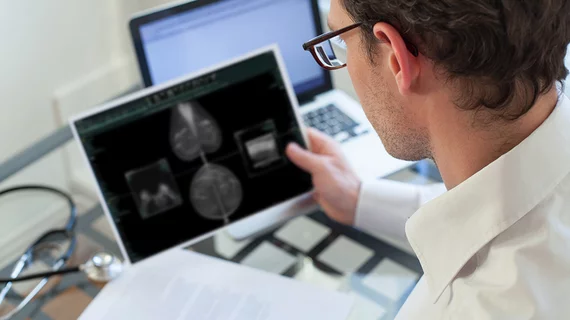AI spots 25% of interval breast cancers missed by radiologists
A new analysis reveals how artificial intelligence systems can improve interval cancer detection in mammographic screening settings, often spotting lesions that human readers miss.
According to the study’s results, a commercially available AI system detects up to 25% of interval cancers initially missed by radiologists. What’s more, the algorithm correctly localized three out of four of the interval cancers it detected.
Senior author of the study Professor Fiona Gilbert, MD, of the University of Cambridge in the U.K., and colleagues published their findings in the journal Radiology.
“Artificial intelligence systems can be used to identify interval breast cancers, although the localizations are not always accurate,” the group wrote. “AI replacement of one human reader could reduce the workload while maintaining the double-reading standard.”
For the study, the research team had the AI system retrospectively analyze a dataset of more than 2,000 screening mammograms completed between January 2011 to December 2018. The algorithm’s outputs were compared to the results previously reported by two human radiologists and then further classified by two additional consultants as either normal or benign, uncertain or suspicious.
At a specificity level of 96%, the AI system correctly identified nearly 25% of interval cancers and correctly localized 77%. The software routinely gave invasive cancers higher risk scores than noninvasive cancers, and also identified more node-positive cancers than node-negative cancers.
In relationship to the risk scores, the group suggested that “a threshold might help the reader decide whether to recall a woman for supplemental screening if her screening mammogram has a high AI score but no discernible signs of malignancy.”
“Accordingly, a threshold could be applied to automatically triage TN mammograms, which would improve early cancer detection in a small number of patients,” the authors added.
The group noted that more interval cancers could be detected at a lower specificity, but it could consequently increase rates of unnecessary recalls.
The study abstract can be viewed here.

